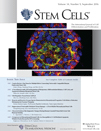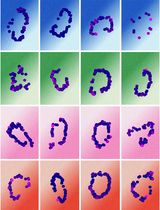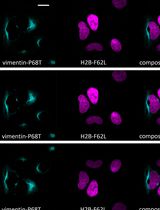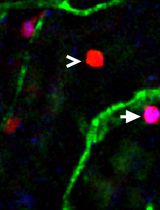- EN - English
- CN - 中文
In vitro Demonstration and Quantification of Neutrophil Extracellular Trap Formation
中性粒细胞胞外诱捕网形成的体外演示和定量
发布: 2017年07月05日第7卷第13期 DOI: 10.21769/BioProtoc.2386 浏览次数: 17305
评审: Benoit StijlemansMeenal SinhaAnonymous reviewer(s)
Abstract
In the recent decade, neutrophil extracellular traps (NETs) have been identified and confirmed as a new anti-microbial weapon of neutrophils. In this protocol, we describe easy methods to demonstrate NET formation by immunofluorescence staining of extracellular chromatin fiber with anti-DNA/Histone H1 antibody and quantification of NETs by using a non-cell-permeable DNA specific dye Sytox orange.
Keywords: NETs (neutrophil extracellular traps) (NETs(中性粒细胞胞外诱捕网))Background
Neutrophils constitute the largest, evolutionary conserved fraction of circulating leukocytes. They set up the first defence line against pathogens by various mechanisms including the formation of neutrophil extracellular traps (NETs). During this process, activated neutrophils expel chromatin fibers from the nucleus. Invading pathogens are then trapped within the network of chromatin and killed by highly concentrated, NET-entangled antimicrobial proteins, such as myeloperoxidase (MPO) and elastase (Brinkmann et al., 2004). However, NETs are a double-edged sword; the unrestrained NET formation from over-activated neutrophils can also contribute to severe tissue damage, for instance by the cytotoxic effect of histone components of NETs (Saffarzadeh et al., 2012). One example of a pathological condition in which neutrophils are over-activated and have enhanced capacity to form NETs is systemic lupus erythematosus. The levels of antibodies against double-stranded DNA as well as other components of NETs are elevated in sera of lupus patients (Knight and Kaplan, 2012; Yu and Su, 2013). Affected skin and kidneys from lupus patients are infiltrated by netting neutrophils, which cause endothelial cell damage, a critical step in the pathogenesis of lupus and other neutrophil over-activation syndromes (Villanueva et al., 2011).
Different methods have been used for NET detection and quantification, including immunocytochemistry (Brinkmann et al., 2010), fluorescent dyes, flow cytometry, and ELISA. Immunocytochemistry with DAPI and DNA/histone was the best method for NET qualification and quantification, since decondensation of the nucleus indicates NET formation. Picogreen dye is a sensitive method to quantify NET-DNA concentration (Saffarzadeh et al., 2012; Tanaka et al., 2015), while Sytox orange is a fast and easy method for NET quantification. Flow cytometric analysis by measuring the signal for labeled-DNA/histone antibody, or myeloperoxidase-DNA based ELISA are useful methods for detection and quantification of NETs in pathological samples such as serum or peritoneal fluid of patients (Caudrillier et al., 2012).
In this protocol, we provide the details for the demonstration of NET formation by fluorescent immunostaining for chromatin fiber with anti-DNA/histone H1 antibody, which has a very high affinity for decondensed chromatin in NETs in comparison to DAPI or Hoechst (Saffarzadeh et al., 2012). Furthermore, we describe a quick method for NET quantification with Sytox orange, a non-cell-permeable DNA specific dye staining extracellular DNA content (Williams et al., 1999; Yost et al., 2009), by fluorescence intensity measured by a microplate reader. This protocol has been applied successfully in our recent studies, whereby we show that antibody- or complement-induced phagocytosis triggers rapid NET formation (Saffarzadeh et al., 2014), and more importantly, mesenchymal stem cells suppress NET formation from over-activated neutrophils (Jiang et al., 2016).
Materials and Reagents
- Pipette tips (Greiner Bio One International, Ultratip)
- Tube 50 ml (SARSTEDT, catalog number: 62.547.254 )
- Syringe 10 ml (B. Braun medical, catalog number: 4606108V-02 )
- Needle 26 G x ½” (B. Braun medical, catalog number: 4665457-02 )
- Pre-Separation filters (30 µm) (Miltenyi Biotec, catalog number: 130-041-407 )
- Millicell EZ Slide 8-well glass (EMD Millipore, catalog number: PEZGS0816 )
- 96-well, black, flat bottom plate, sterile, with lid (Corning, catalog number: 3916 )
- C57BL/6J mice at preferred age of 8-12 weeks, both male and female are suitable for this protocol (THE JACKSON LABORATORY, catalog number: 000664 )
- Phosphate buffered saline (PBS) (Thermo Fisher Scientific, GibcoTM, catalog number: 14190144 )
- 0.5 M EDTA, sterile (Thermo Fisher Scientific, InvitrogenTM, catalog number: 15575020 )
- Histopaque-1077 (Sigma-Aldrich, catalog number: 10771 )
- Histopaque-1119 (Sigma-Aldrich, catalog number: 11191 )
- Optional: FITC-conjugated mouse anti-human CD15 antibody (Clone VIMC6) (Miltenyi Biotec, catalog number: 130-081-101 )
- Optional: FITC-conjugated mouse IgM isotype control (Miltenyi Biotec, catalog number: 130-093-178 )
- Optional: MACSxpress neutrophil isolation kit, human (Miltenyi Biotec, catalog number: 130-104-434 )
- Optional: MACSxpress erythrocyte depletion kit, human (Miltenyi Biotec, catalog number: 130-098-196 )
- Mouse neutrophil isolation kit (Miltenyi Biotec, catalog number: 130-097-658 )
- Optional: Propidium iodide (PI) staining solution (BD, BD Biosciences, catalog number: 556463 )
- Phorbol 12-myristate 13-acetate (PMA) (Sigma-Aldrich, catalog number: P8139 )
Note: Dissolve in DMSO to make 1 mg/ml stock, and store the aliquots at -20 °C. - Dimethyl sulfoxide (DMSO) (Sigma-Aldrich, catalog number: D8418 )
- 16% (w/v) paraformaldehyde (PFA), methanol-free (Thermo Fisher Scientific, catalog number: 28908 )
- Purified mouse anti-DNA/Histone H1 antibody (EMD Millipore, catalog number: MAB3864 )
Note: Make aliquots and store at -20 °C. - 4’,6-diamidino-2-phenylindole, dihydrochloride (DAPI) (Thermo Fisher Scientific, InvitrogenTM, catalog number: D1306 )
- Alexa Fluor 555-conjugated goat anti-mouse IgG secondary antibody (Thermo Fisher Scientific, InvitrogenTM, catalog number: A-21422 )
- Optional: APC-conjugated rat anti-mouse Ly6G (Gr-1) antibody (Clone RB6-8C5) (Thermo Fisher Scientific, eBioscienceTM, catalog number: 17-5931-82 )
- Optional: APC-conjugated rat IgG2b Isotype control (Clone eB149/10H5) (Thermo Fisher Scientific, eBioscienceTM, catalog number: 17-4031-82 )
- Optional: purified rat anti-mouse Ly6G antibody (Clone RB6-8C5) (Abcam, catalog number: ab25377 )
- Optional: purified rabbit anti-human CD15 antibody (Clone SP159) (Novus Biologicals, catalog number: NBP2-21754 )
- Purified goat anti-human/mouse myeloperoxidase/MPO antibody (R&D Systems, catalog number: AF3667 )
- Purified mouse IgG2a isotype control (Clone C1.18.4) (BD, BD Biosciences, catalog number: 550339 )
- Purified rabbit anti-human/mouse neutrophil elastase antibody (Abcam, catalog number: ab68672 )
- Sytox orange nucleic acid stain (Thermo Fisher Scientific, InvitrogenTM, catalog number: S11368 )
- Fetal bovine serum (FBS) (Biochrom, catalog number: S 0615 )
- Sodium azide (NaN3) (Sigma-Aldrich, catalog number: S2002 )
- RPMI 1640 medium (Thermo Fisher Scientific, GibcoTM, catalog number: 21875034 )
- GlutaMAX (Thermo Fisher Scientific, catalog number: 35050038 )
- MEM non-essential amino acids (NEAA) (Thermo Fisher Scientific, GibcoTM, catalog number: 11140035 )
- Penicillin/streptomycin (Biochrom, catalog number: A 2213 )
- Bovine serum albumin (BSA) (Sigma-Aldrich, catalog number: A2153 )
- Goat serum (Sigma-Aldrich, catalog number: G9023 )
- Fluorescence mounting medium (Agilent Technologies, DAKO, catalog number: S302380-2 )
- FACS buffer (can be kept at 4 °C for 2 weeks) (see Recipe 1)
- R1 medium (prepared media can be kept at 4 °C for 2 weeks) (see Recipe 2)
- Blocking buffer (prepare fresh) (see Recipe 3)
- Antibody diluent (prepare fresh) (see Recipe 4)
Equipment
- Pipettes
- Centrifuge
- Optional: MACSxpress Separator (Miltenyi Biotec, catalog number: 130-098-308 )
- Optional: MACSmixTM Tube Rotator (Miltenyi Biotec, catalog number: 130-090-753 )
- Humidified cell culture incubator set to 37 °C and 5% CO2
- Orbital shaker, such as Heidolph Unimax 1010 (Heidolph Instruments, model: Unimax 1010 , catalog number: 543-12310-00)
- Fluorescent microscope, such as Zeiss Axiophot microscope with an AxioCam digital color camera and AxioVision software v4.7 (Carl Zeiss, model: Axiophot )
- AxioCam digital color camera
- Microplate reader that can measure the absorbance and emission of Sytox orange at 547 nm and 570 nm, respectively, such as Mithras LB940 (BERTHOLD TECHNOLOGIES, model: Mithras LB 940 )
- Optional: Flow cytometer (to check the purity of isolated neutrophils) FACS Canto II (BD, BD Biosciences, model: BD FACSCANTO II ) with FACSDiva software
Software
- AxioVision software
- Optional: FACSDiva software
Procedure
文章信息
版权信息
© 2017 The Authors; exclusive licensee Bio-protocol LLC.
如何引用
Jiang, D., Saffarzadeh, M. and Scharffetter-Kochanek, K. (2017). In vitro Demonstration and Quantification of Neutrophil Extracellular Trap Formation. Bio-protocol 7(13): e2386. DOI: 10.21769/BioProtoc.2386.
分类
免疫学 > 免疫细胞功能 > 嗜中性粒细胞
细胞生物学 > 细胞成像 > 荧光
您对这篇实验方法有问题吗?
在此处发布您的问题,我们将邀请本文作者来回答。同时,我们会将您的问题发布到Bio-protocol Exchange,以便寻求社区成员的帮助。
Share
Bluesky
X
Copy link














